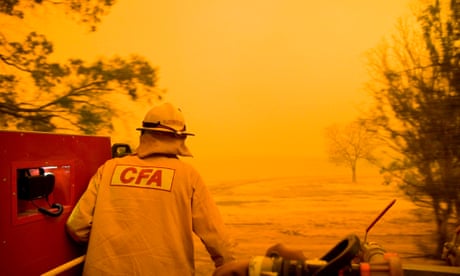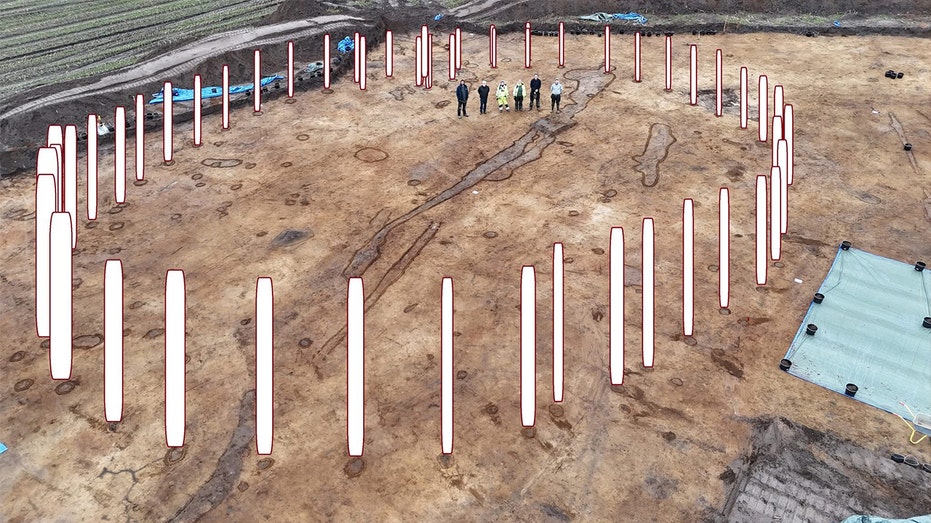- by foxnews
- 10 Mar 2025
‘Harrowing’: trauma caused by Morwell coalmine fire set high school students back 18 months
‘Harrowing’: trauma caused by Morwell coalmine fire set high school students back 18 months
- by theguardian
- 03 Feb 2022
- in news

The Morwell coalmine fire in Victoria set high school students back more than 18 months academically, according to a new study.
The analysis of the Monash Rural Health Study led by Dr Emily Berger, published in the Trauma Psychology journal in December 2021, found that the 2014 fire led to an 18.5-month delay in the academic progress of secondary school students.
The research measured academic performance through examining the Naplan results of more than 300 students from 20 primary and secondary schools in the Latrobe Valley both before and after the mine fire, as well as surveying the students using the Children's Revised Impact of Events Scale (Cries-13), as a measure of psychological distress.
Berger said combining the two datasets was important because the educational and emotional states of students "go hand in hand" in disaster events.
Berger said the 18-month delay would have led students to a loss of engagement in learning and self-esteem, making it more likely for them to leave school before finishing year 12 or not complete higher education.
The fire in the Morwell open-cut brown coalmine next to the Hazelwood power station blanketed Morwell and surrounding areas in smoke and ash for six weeks in February and March 2014.
Dan Swallow, the acting principal of the Morwell Campus of Kurnai College, was year 7 coordinator at the time of the fire. He said what stuck with him most was the disruption for the new cohort at "such a huge transition time".
He said the fires occurred at the start of the year, which led staff to try to take the students on as many excursions as possible, "anything to get them out of the valley, anything to give them a break from the air".
Swallow said many families chose to keep their kids at home, worried about asthma and air quality.
Tracie Lund, the manager of the Morwell Neighbourhood House, said the industrial fire was a "harrowing 45 days".
"People were reporting almost immediately short-term impacts, experiencing stinging eyes, thick heavy heads, the onset of asthma or respiratory issues they'd never had before, unable to sleep, difficulty breathing," she said.
Swallow said the teachers were also severely impacted. "They might not have been getting rest at night, they might not have been coming in with the same energy, or calling in sick," he said.
The smell of the smoke was also traumatic for families at the school who had experienced Black Saturday and moved to the township to get away from the threat of bushfire only to experience a coal fire, Swallow said.
Lund said the trauma of the event, with high levels of anxiety experienced, and the length of it, left her unsurprised that students fell behind.
"While I'm not surprised, it's also quite distressing to know what we were crying out for in those early days, and what we were fearful of, is actually coming to be recognised now, that there were immediate and long-term impacts across the board."
Berger said a similar study of children and adolescents impacted by the 2002 Prestige oil spill disaster in Spain showed that one year after the event 15- to 16-year-olds living in a more heavily polluted area had lower academic achievement compared to those from less impacted areas.
While a clear impact was seen for older students in Morwell, unlike other studies looking at the academic impact of disaster, this study did not find that academic outcomes for primary school students in the affected area were impacted by the fire.
The authors of the study hypothesised that extra resources and academic support provided to primary school students may have made the difference.
Brooke Mawson, whose daughter was in grade 5 at the time of the fire, said that the children were still dropped off at school in Morwell and then bused to the school in the nearby town of Moe, which resulted in them losing an hour's learning time each way.
Wendy Farmer is the president of the local community group Voices of the Valley, which formed out of the catastrophe.
She said one anecdote that had stayed with her was from a parent whose five-year-old son returned from attending primary school in the neighbouring town to say he did not want to be back home "because his house hurt him".
"That's not what any parent wants to hear; your house is your safety net," Farmer said.
Berger said the findings of the study had clear implications for the need to ensure there was appropriate and adequate educational and emotional support for students after disaster events, because "those two go hand in hand in response to those sorts of events".
Berger said the study also related to rural schools more broadly. "Rural and remote areas are more susceptible to experiencing disaster events, it might be farming families and drought, or other disaster events, they're more likely to experience those sorts of events," she said.
"And then coupled with that, in regional and rural areas, there is less access to psychological services and support services that can support families, children and teachers when there is an adversity or a trauma."
- by foxnews
- descember 09, 2016
Ancient structure used for cult 'rituals' discovered by archaeologists
A Neolithic Timber Circle was discovered by archeologists in Denmark resembling the historical landmark Stonehenge in the U.K. It is open to be viewed by the public.
read more


